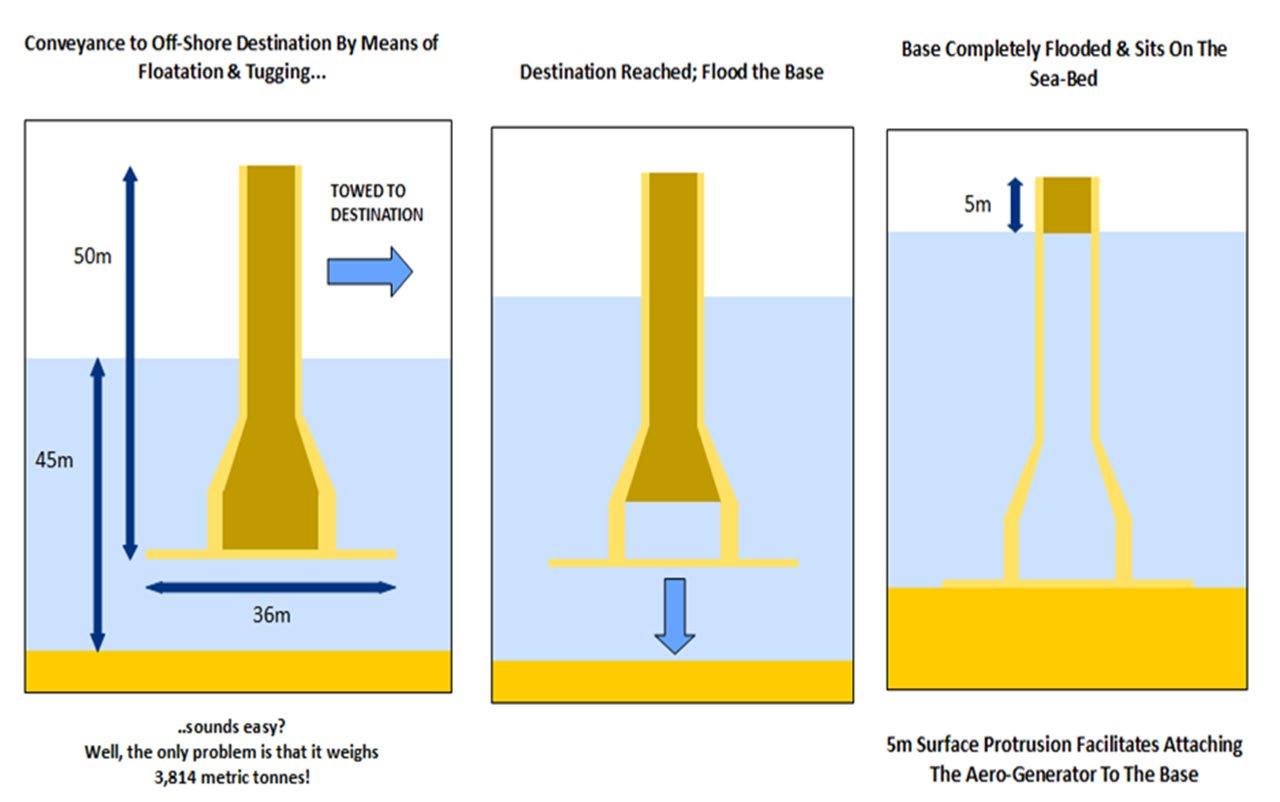
3 minute read
Initial Specification
INITIAL SPECIFICATION
• The tower will measure 50 metres in height and 36 metres in maximum diameter. Our design solution for launching this tower must keep modifications and alterations to its design to an absolute minimum. As such, our design must simply comprise a basic structure that can be fitted to the tower externally once it has been fabricated.
Advertisement
• Due to the implications of the tower’s sheer size, it must not be sunk in waters deeper than 40 to 45 metres, so as to provide sufficient clearance above the surface of the water on which the turbine may later be built.
• In order for the tower to remain stable, level and therefore safe to build upon, it must also be sunk in an area of sea bed whose relief is relatively flat.
• The tower must feature a stabilisation device with which it can be towed safely and comfortably from dry dock to location. This device must fit around the base of the tower, and control its rocking and tilting motions sufficiently so as to prevent the structure from toppling. This is an essential design feature, because in its absence, the tower would be next to defenceless against the risk of falling over. This eventuality in itself would be catastrophic, because lifting it back up again would be a near-impossible task.
• The device must be competent of withstanding high intensity wave attack, and absorb the shock of high force and high amplitude oscillations. Repetitive strains must be resisted up to 15 times every minute and stability must be maintained for upward shifts due to wave heights of up to 2.5 m (as disclosed by research).
• However, these shocks must be absorbed gradually, rather than completely obstructed by a sudden impact, as this would inflict tremendous damage upon the pistons and structure as a whole. The system must therefore feature mechanical pistons that can compress and expand slowly, with a good degree of control in order to work around unwanted oscillations due to wave attack. That said, these movements must also be slowed down with some form of critical damping, such that the tower does not continue to rock back and forth continually.
• The device must provide stability uniformly in all directions in order for the tower to be fully supported against all possible directions of toppling, but must also be hydro-dynamically streamlined, so that it can move through the water with relative ease and a good degree of manoeuvrability and controllability.
• The floatation device must be easy to fit to the base of the tower, but at the same time must be capable of supporting its full weight during the course of the launch procedure as well. It must therefore be highly buoyant so as to achieve this effectively. In turn, it must also feature a robust, high-strength fixing with which it may hold the tower comfortably until it is ready to be sunk.
• When itcomes to launching, the jacket must be easily deployable as well so as to avoid complications during the final stage (sinking). The tower will have to be dropped out through the centre of the jacket, sliding out downwards under its own weight as it fills with water.
• In order to sink the tower on location, the outer shell must feature a number of holes through which the water can enter. There must also be pressure relief holes through which the air already inside the tower can escape, and hence prevent air locks. The diameter of these holes must be selected carefully in order to control the rate of fill.
< SCHEMATIC SHOWING DIMENSIONAL CONSTRAINTS OF THE TOWER
Source: Primary
Created: December 2011
PROCEDURE DIAGRAM FOR CONVEYANCE OF TOWER
Source: Primary Image
Created: 14th December 2011
V









